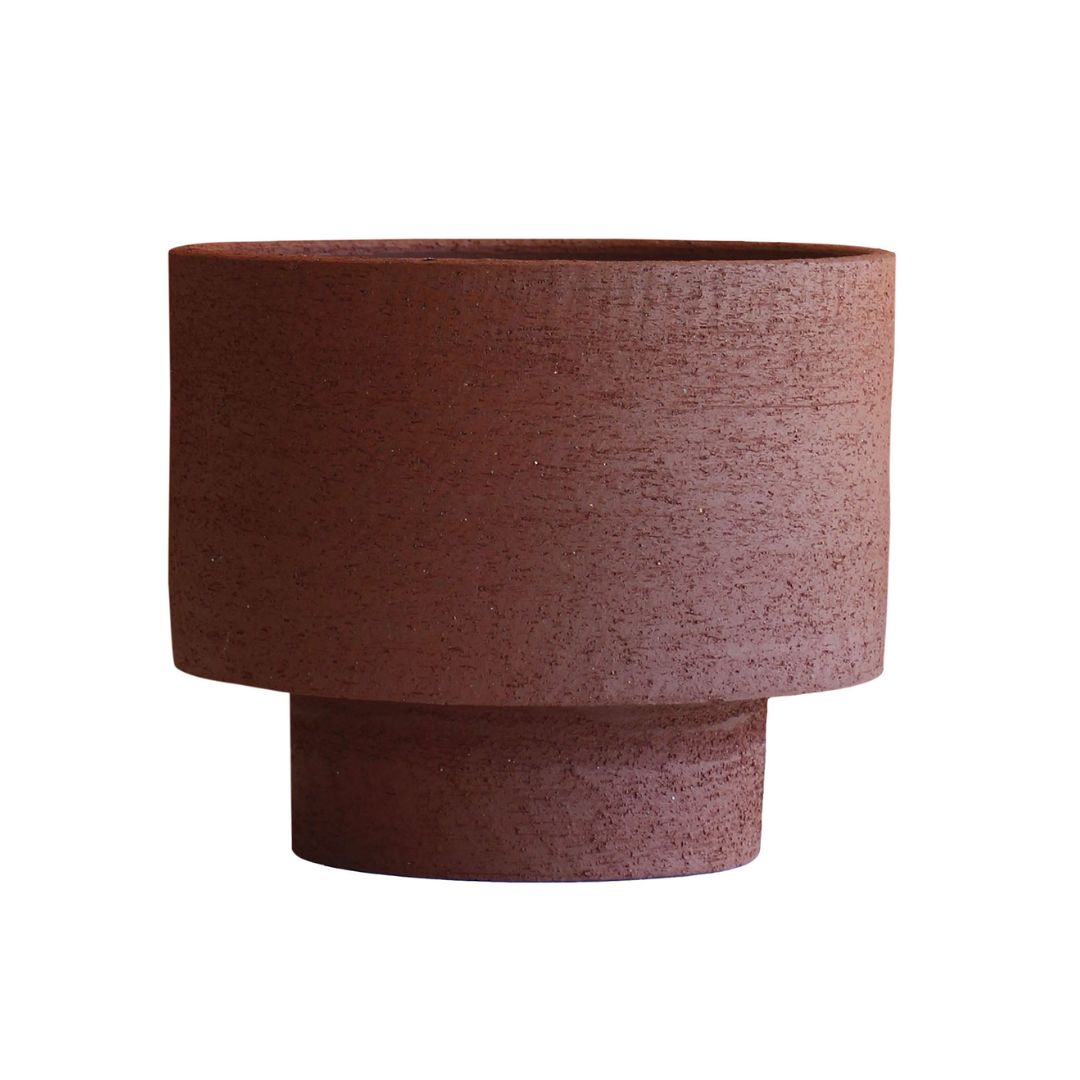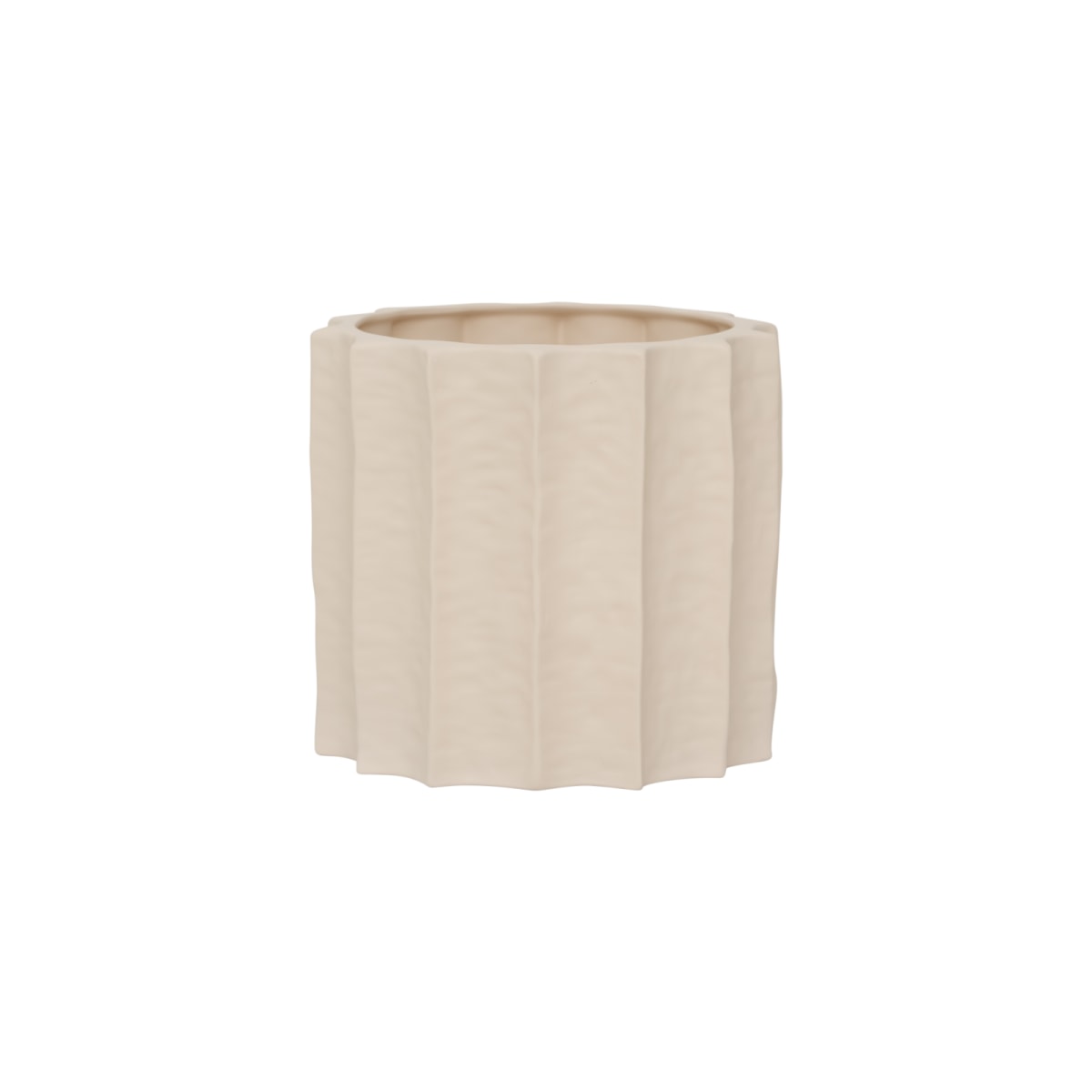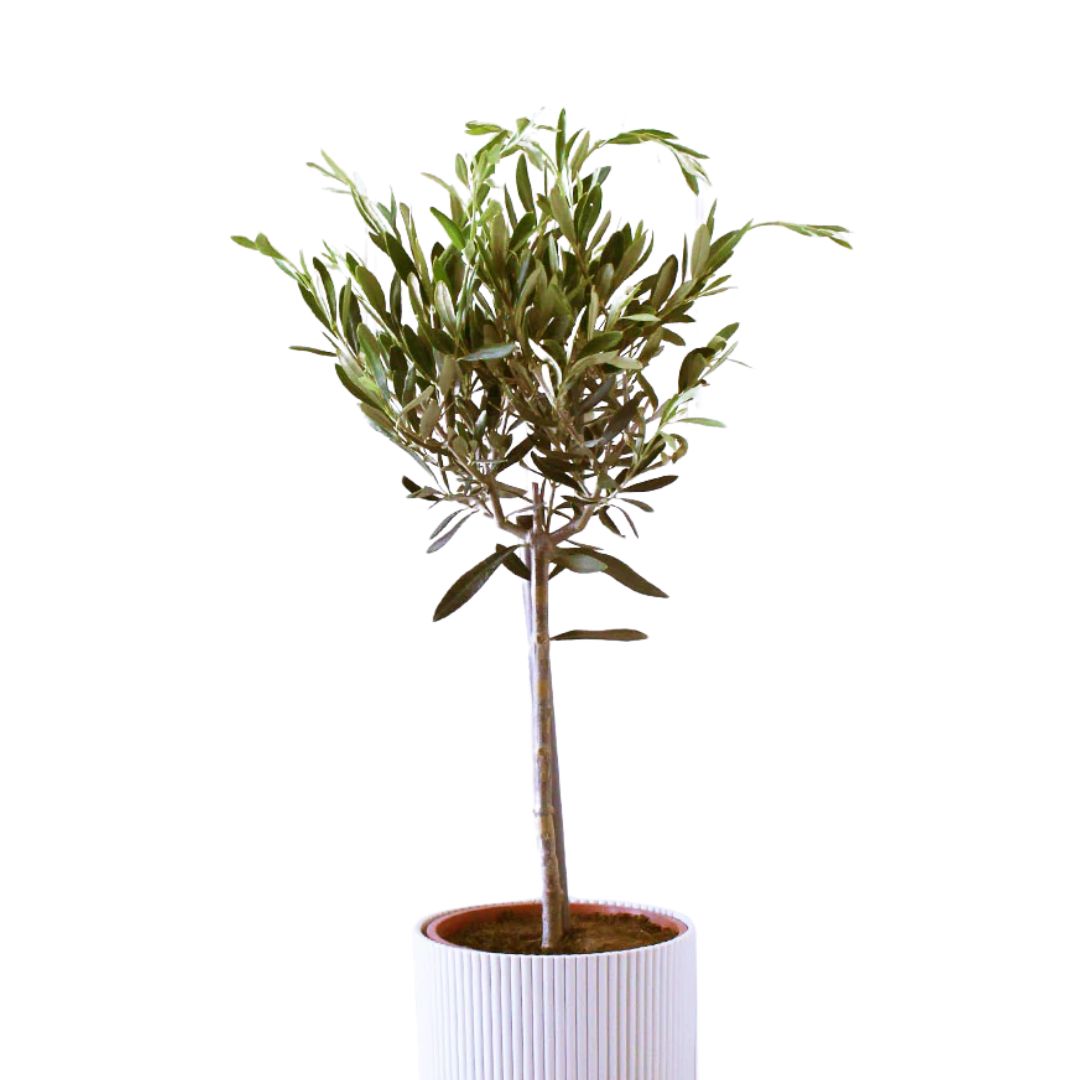How to Make an Urban Garden More Private — 8 Easy Ways to Keep Prying Eyes Away When You're Overlooked in the City
Discover the stylish ideas and clever tricks garden designers use to create privacy in built-up, urban areas, so you can enjoy your outside space without an audience
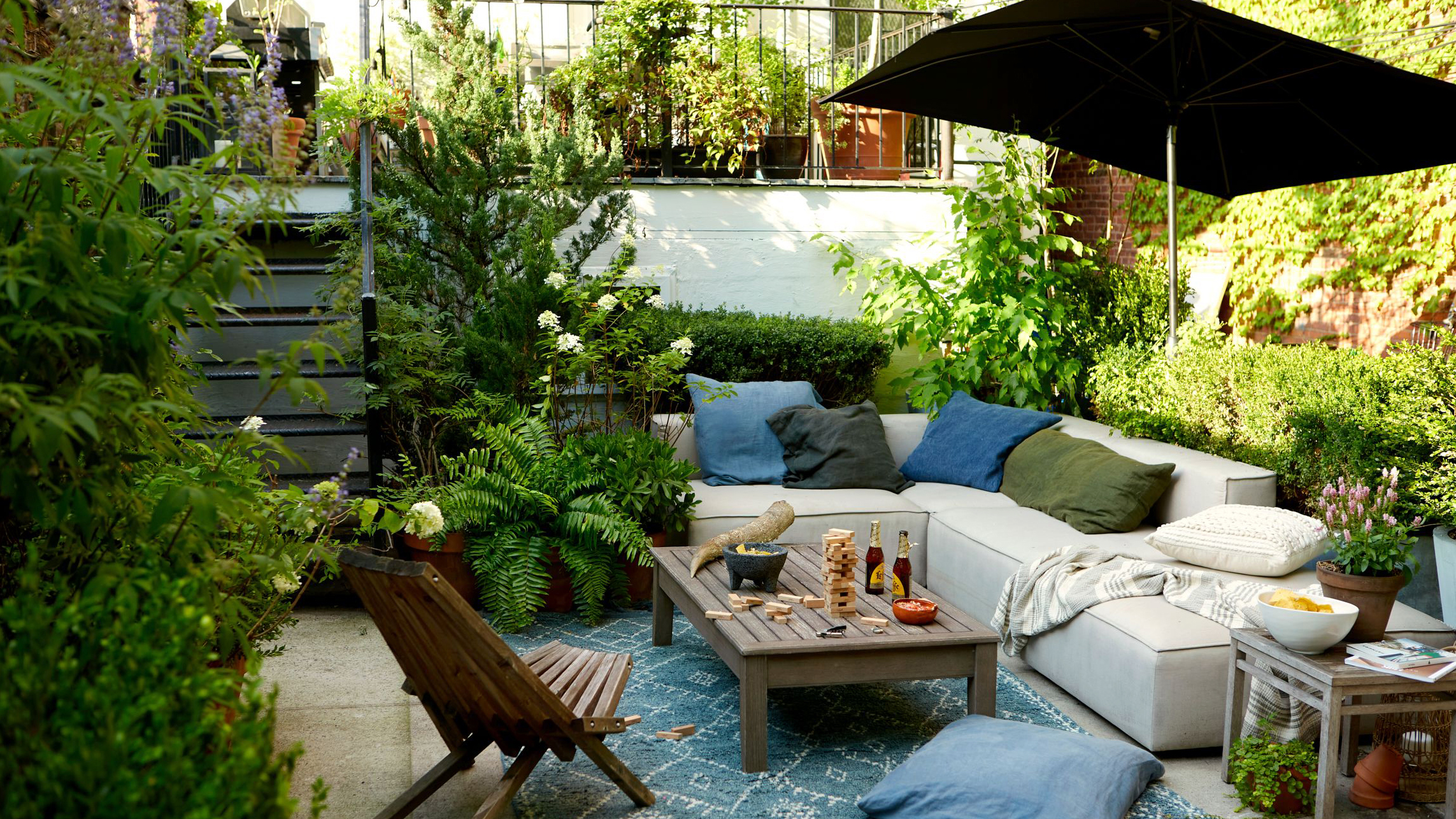
It's lovely to have outside space in a city — a pocket of green amongst the brick, concrete, metal, and glass can be a welcome respite. Yet these prized areas are often overlooked by neighboring properties or passers-by. Knowing how to make an urban garden more private will enable you to relax and enjoy your space more.
Whether you're concerned about prying eyes in your garden or want your yard to feel more enclosed, professional garden designers are used to overcoming these challenges. Those we've spoken to have a multitude of nifty urban garden ideas for creating more privacy.
Discover what garden designers suggest and how to implement these ideas in your space.
1. Add a Row Of Pleach Trees Along Your Urban Gardens Boundary
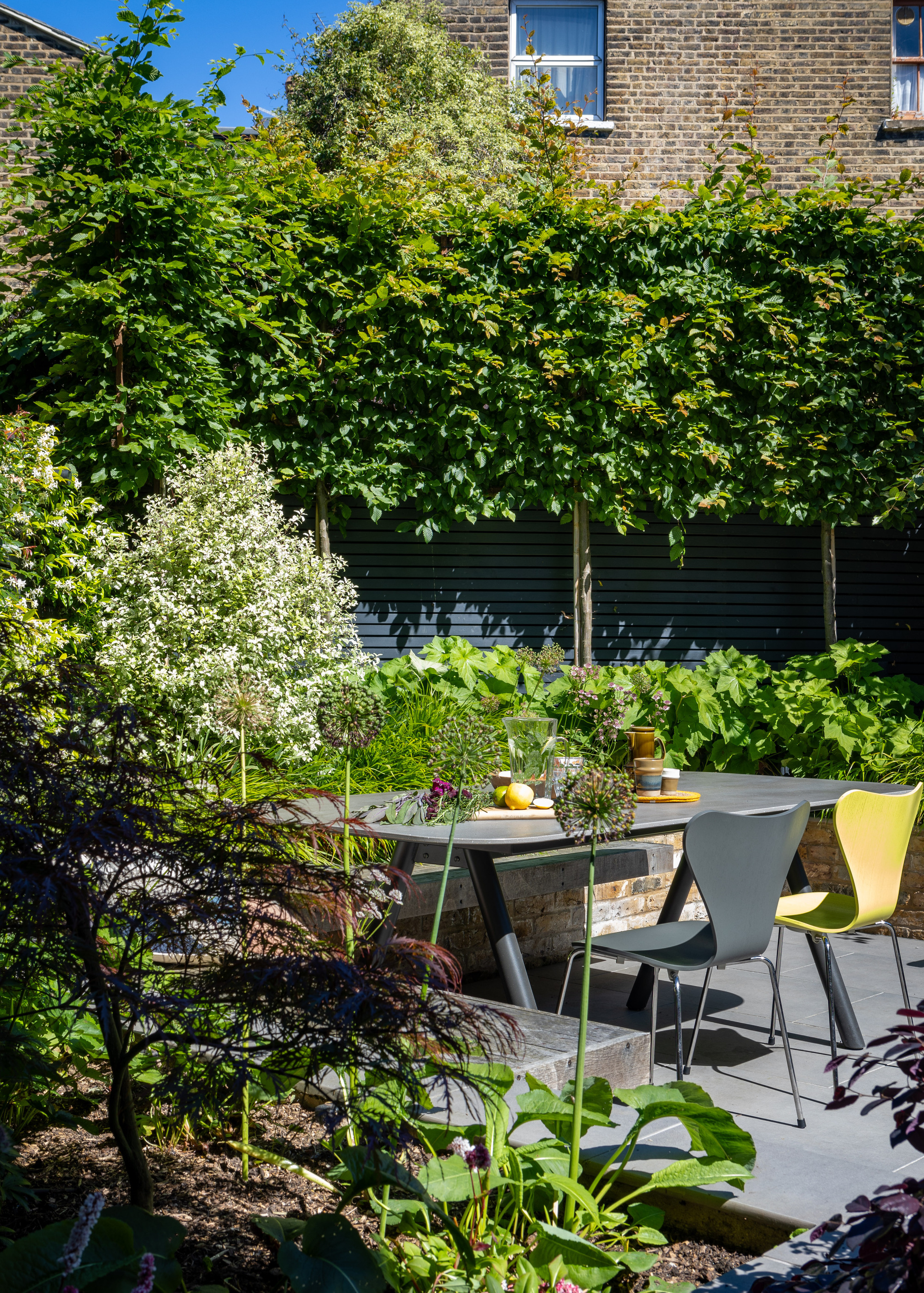
Pleached trees are an attractive way to create a green screen.
Pleached trees are an attractive option for many backyard ideas but they are particularly suitable when it comes to creating extra privacy in an urban garden. With their neat sculptural form, they can provide a discreet green screen when planted in rows in front of a rear or side boundary.
"Pleached trees are trees which have been trained against a square frame, providing the perfect above fence line privacy, which is permitted to be over 2m tall," says Sarah Kay, founder, Sarah Kay Garden Design. "In one of my projects, I used Carpinus Betulus (Hornbeam) pleached trees, which hold their coppery coloured leaves in Winter, to provide an all-year-round screen from the neighbours at the back.
"All year coverage can also be provided by evergreen options such as Photonia or Prunus laurocerasus (Cherry Laurel), although these might prove too dense and heavy for a small garden. If so, Fagas sylvativca (Beech) is another deciduous option with great Winter leaf coverage. An annual prune in late Summer, early Autumn should keep the trees within the frame."
Placing pleached trees in an urban garden is a great way to create natural fences and privacy screens, so why not add them to your space to keep prying eyes away?

Based in East London, Sarah Kay is an award winning garden designer with over 12 years’ experience of transforming awkward or neglected spaces into beautiful gardens. With garden design qualifications from the renowned Capel Manor college and a pre-registered member of the Society of Garden Designers, Sarah brings a wealth of qualified experience and passion to creating bespoke, stylish but practical, wildlife friendly gardens.
2. Place Large Planters Close to a Dining Area
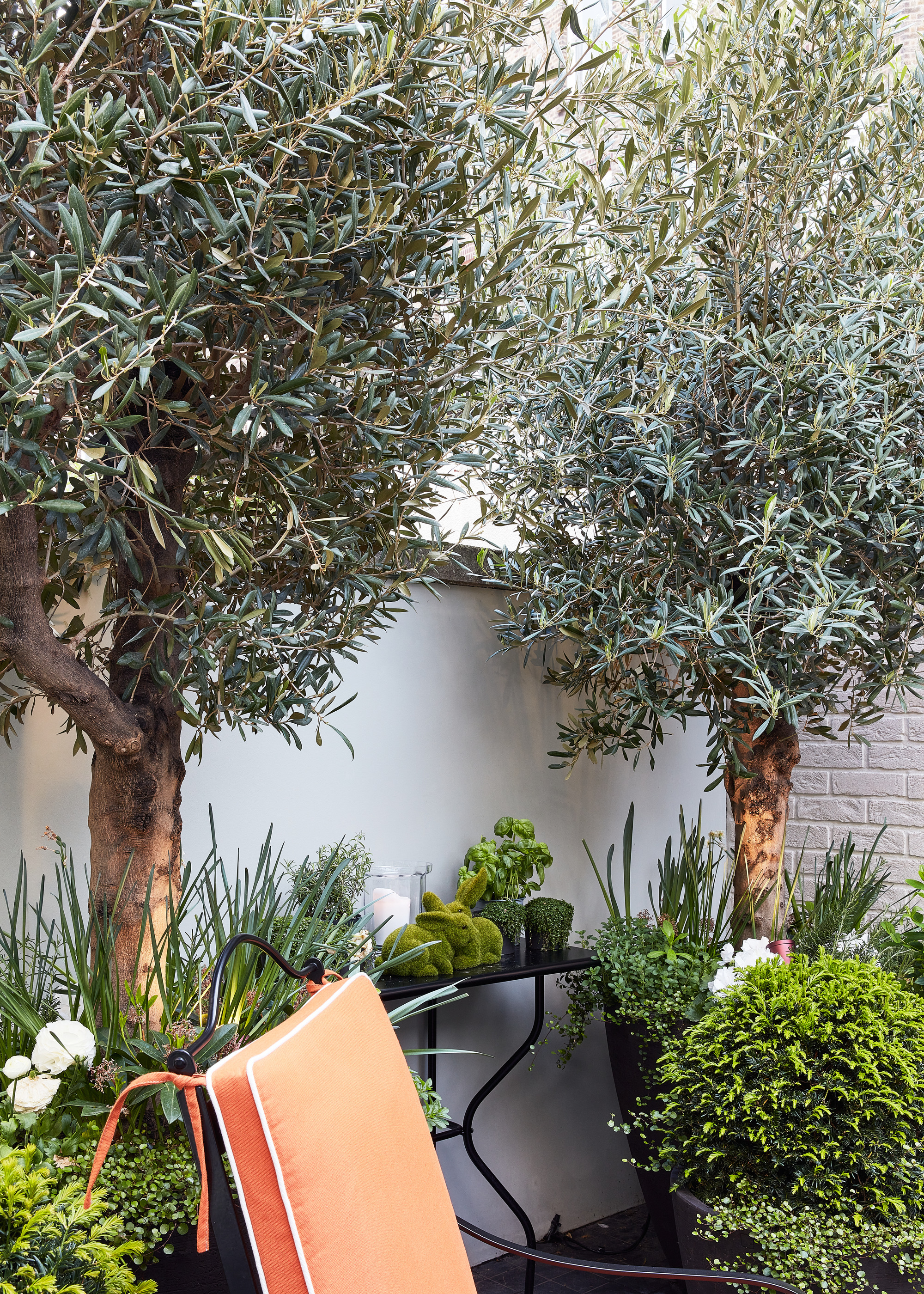
These olive trees in planters create privacy and a Mediterranean vibe in this urban garden.
Pairs, rows, or groups of large planters with tall plants or trees are often used in public spaces, such as hotel lobbies and offices, to screen off seating areas, create a sense of privacy, and absorb sound. But what about placing them in your own urban garden for added privacy? Well, it's a win in our books and can certainly help create a boundary or a wall between you and your neighbors, especially if you have an urban garden terrace or balcony.
The same idea can be used outside in the garden to create a subtle screen. Some of the best trees to grow in pots include dwarf apple trees, Japanese maples, and olive trees.
"Placing large planters with olive trees or stamen plants grouped around dining furniture or seating areas can create the feeling of sitting under trees," says garden designer, Kate Gould, founder, Kate Gould Gardens. "These are a nice way to provide green privacy, particularly if you don't fancy a pergola, or parasol."

Kate Gould Gardens began in 1998 and now, 27 years and 5 Chelsea gold medals later, Kate is one of the most sought after garden designers in London. Alongside her talented team, you’ll still find her with her hands in the dirt, installing the latest exquisite planting scheme she has dreamt up.
3. Plant a Tall Tree in a Strategic Position
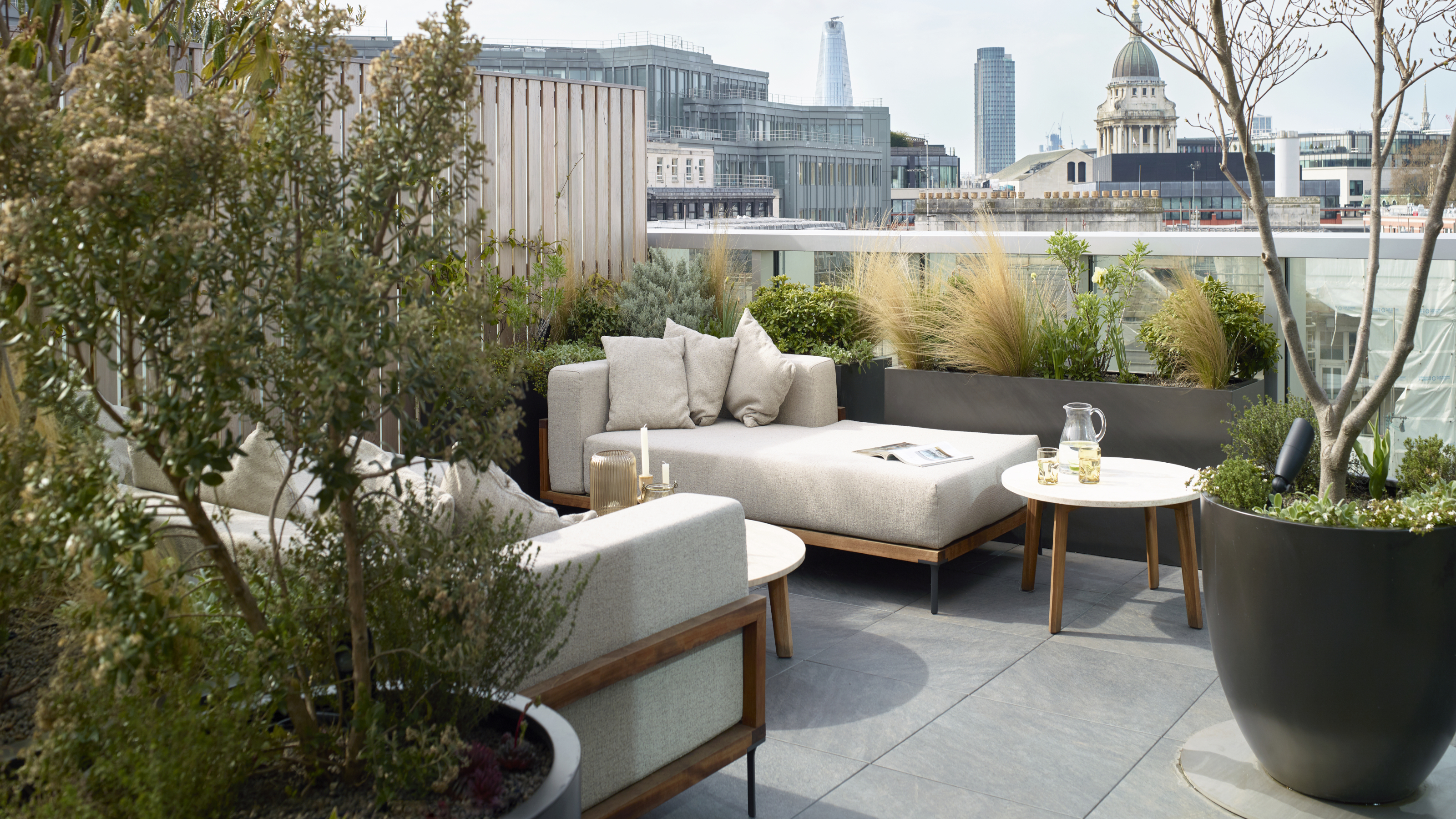
Shelter under the shade of a strategically planted tree.
As well as privacy, most urben gardens require some shade too. Planting a tall tree in a strategic position can provide both. There are a number of fast-growing trees for privacy. However, choose the species wisely as trees that grow fast require regular pruning and maintenance. Also ensure the tree–and its root system–has adequate space to grow, away from drains, power lines, overhead cables and neighboring properties.
"In the UK, the law states that back garden boundaries (fences and walls) should be no higher than 2 meter and you will will need planning permission to build higher," says Sarah. "Although some areas have different restrictions so it is always worth checking with your local council.
"However, there are no restrictions for trees and plants. Planting trees in strategic positions to block windows or unsightly garden buildings is a great way of making your garden feel more private.
"Always select a small garden tree such as an Amelanchier lamarkii, Prunus serrula or Betula jacquemontii and prune it annually to ensure it doesn’t get too big. Multi-stem varieties are useful as they tend to be slower growing and the stems provide Winter structure and interest too."
4. Fit a Trellis to Your Fence

Climbing plants will create a living canopy along a fence topper.
Wherever you live, boundary fences and walls are only permitted to a particular height, so always check with your council, planning department or HOA, before installing one or adding to it. If you're below the permitted height, fitting a trellis or fence topper to the top of your fence is a discreet way to obstruct views, particularly if you grow trailing plants over it.
"Fencing with trellis attached to the top is also not allowed to be taller than 2 meter," says Sarah. "However, growing a climbing plant up your fencing and trellis can help to create additional privacy. In my courtyard garden, a mature Wisteria is trained along the top of the batten trellis, increasing the privacy from next door."
Sarah continues, "Trachelopspernum jasminoides (Evergreen Jasmine) or Hydrangea anomala petiolaris (Climbing Hydrangea) are also great options for providing all year round cover. It's always good to speak with your neighbors before proceeding with your plans."
"Often raising fences with a trellis can cause neighbours to fall out, so any time you plan to raise a boundary, please do check your relevant planning permissions and speak to your neighbors first," adds Kate.
5. Build a Small Pergola
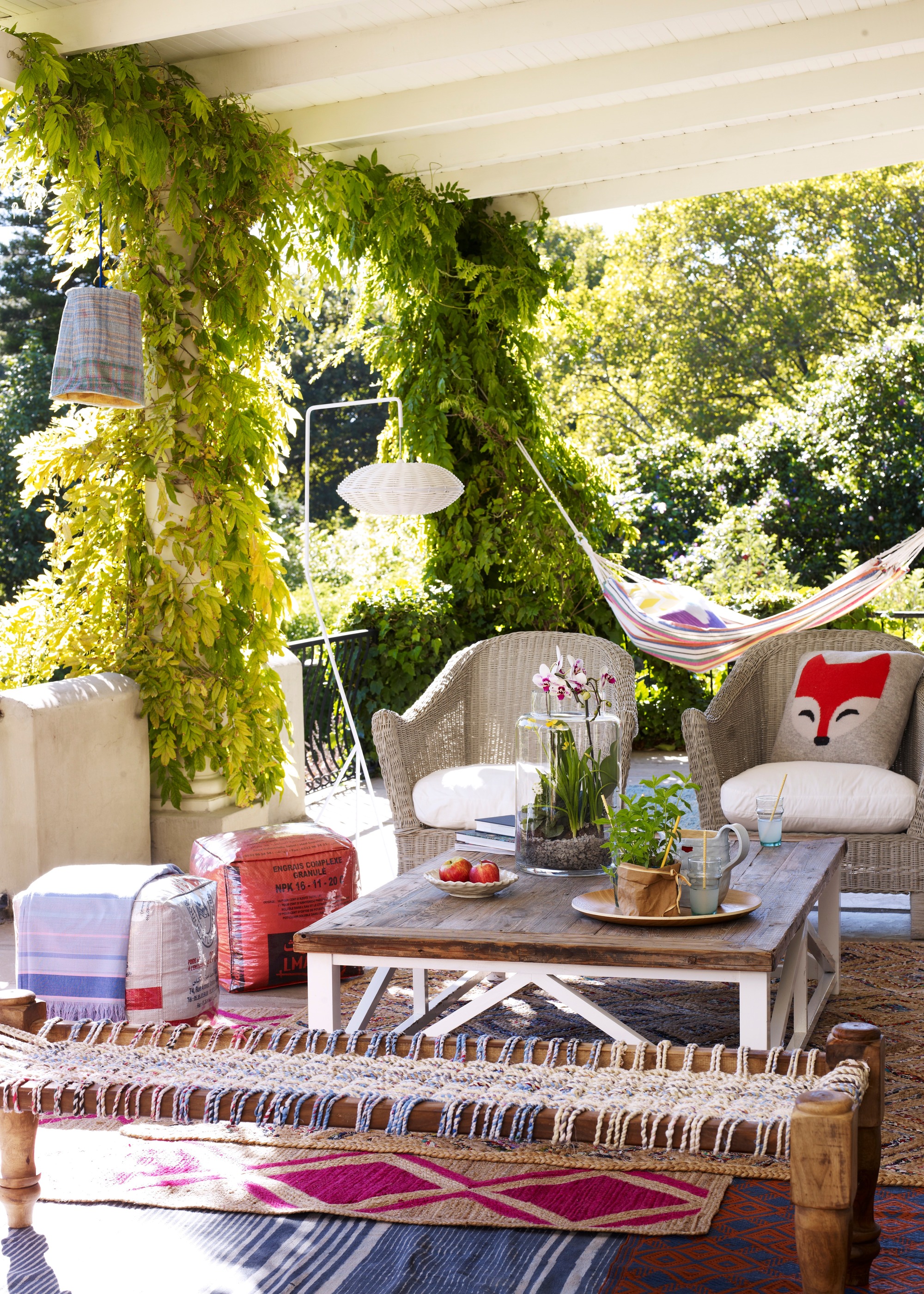
A pergola, or similar style structure, provides privacy and much needed shade when the weather is hot
Pergola ideas are popular in urban gardens, particularly if there is a need for more privacy and you're living in a small space. As well as the size and style, deciding where to place a pergola is key. Although convenient, it is too close to the property and can cast shade inside, so think about it from all angles and throughout the seasons. Whilst shade might be welcome in the summer, it may not feel as good in December.
Climbing plants will also take time to grow, so consider an enclosed roof if you are overlooked from above. Some modern pergolas come with mechanised retractable roofs too.
"Pergolas are more robust structures than trellises and akin to making a sheltered outdoor room," says ecological garden designer and American Horticultural Society consultant, Rebecca McMackin
"In an urban backyard, there are generally two placement options: right up against the building or against the back wall. There are benefits to both approaches: a pergola is far more accessible near the house, with a view to the garden.
"However, situated at the back wall, a pergola can be a destination, which can give the space a romantic and expansive feel. Regardless, there is an innate desire in people to sit in a sheltered space, and look out at a lovely view, the longer the better. So keep the view from your pergola in mind when you're deciding where to place it."

Rebecca McMackin is an ecological horticulturist and garden designer. She lives in the woods of Connecticut, writing, lecturing, and designing the occasional garden. Rebecca holds a M.Sc. in Biology from the University of Victoria, and a M.Sc. in Landscape Design from Columbia University. She works to educate people on ecological landscape management and pollination ecology and is part of the Lifelong Learning Program at the American Horticultural Society.
6. Install an Arbor or Arch
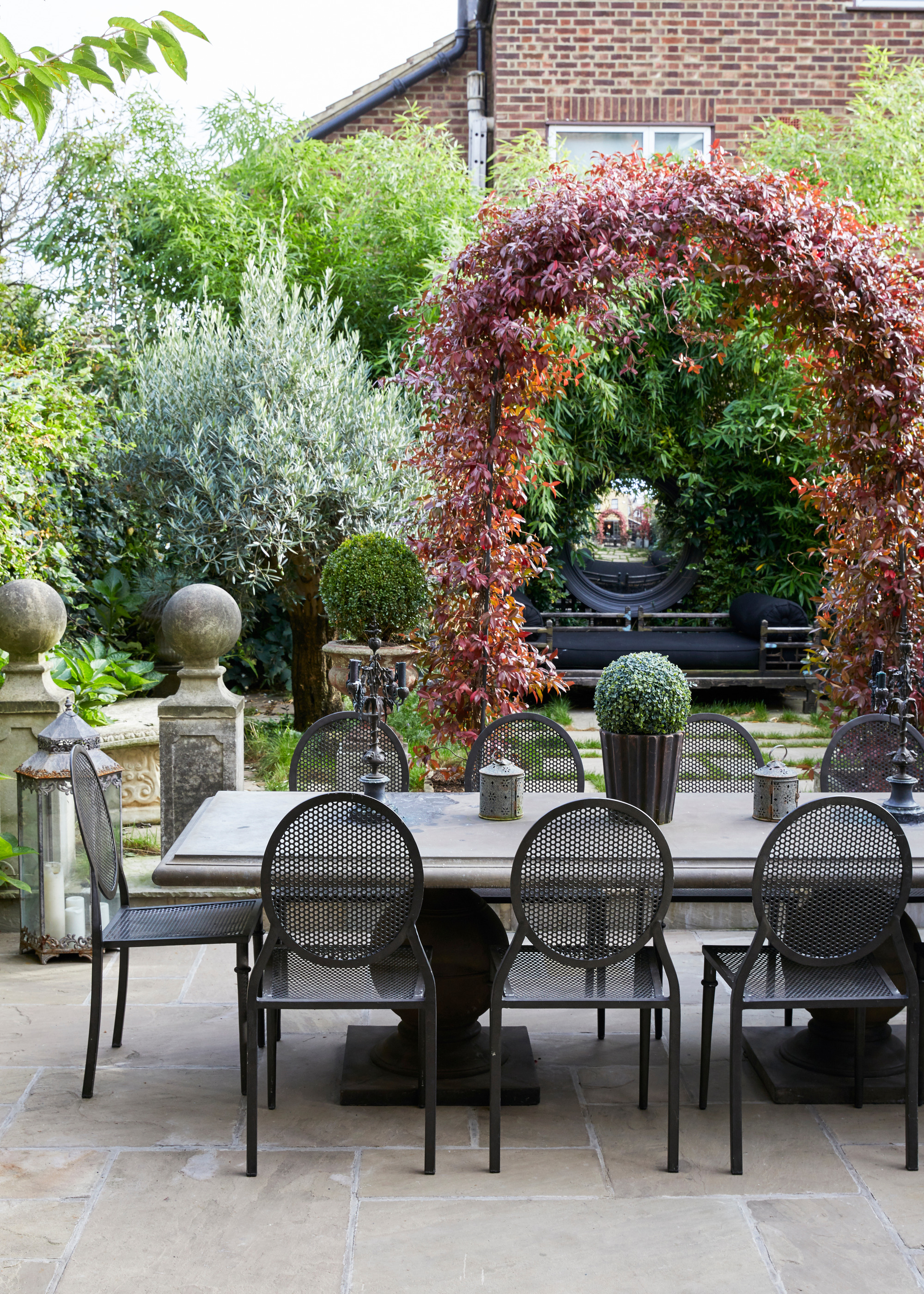
A garden arch is a subtle way to block a view.
Arbours and arches add height and interest in a garden, particularly when laden with scented climbers and pretty plantings. They are also a wonderful way to hide a view into an outdoor dining or seating area. Again, consider the placement carefully and choose climbing plants that will grow well in your region and soil conditions. Arbours and arches are a perfect way to separate one point of your urban garden from another and allow you to keep a bit of privacy whenever you need.
"Arbours and arches laden with climbers and vines not only provide screening, but can also act as a gateway from one part of the garden to another," says garden designer Manoj Malde, author of Your Outdoor Room. "These features may be constructed in timber, metal, or willow.
"Natural woven willow screens are also sustainable, look good, and are easy to replace if need be. A quick way to make a willow arch is to plant living willow rods in the ground, which will then root in the soil and grow. When they are tall enough, you simply tie the stems into an arch at the top."

Manoj Malde is an award-winning garden designer, TV gardener and author of Your Outdoor Room. He is also an RHS show judge, RHS ambassador and Chelsea Flower Show medalist. Manoj is highly skilled at combining colours and textures with planting schemes and attributes his love of colour to his Indian ancestry as well as his background in the fashion industry.
7. Introduce a Metal Screen

Garden designer, Sarah Kay has used a large corten steel screen to increase the privacy in this urban courtyard
If arbours and arches are a tad too traditional for you, a metal screen can offer a more contemporary look for the perfect urban garden privacy, particularly one that doubles up as an interesting installation. When considering the options, choose a material that works with the rest of your garden color scheme.
"Screens can create secluded hideaways and areas designed for contemplation," says Manoj. "Metal screens made from weathered steel, powder-coated aluminium or a composite decorated with dramatic laser-cut patterns can be used as a stand-alone art installation, to hide unsightly areas or to provide privacy.
"These screens can also be incorporated as roof panels on a pergola, providing some shelter and screening from above. When deciding where and what type of screen to install, first have a look around your garden. Think about where you want to sit and what currently overlooks the area before making your choices.
"Additionally, before adding tall features, such as screens, in your garden, consult your local planning regulations to check that they comply with the rules in your area."
8. Trim Your Urban Garden Hedges
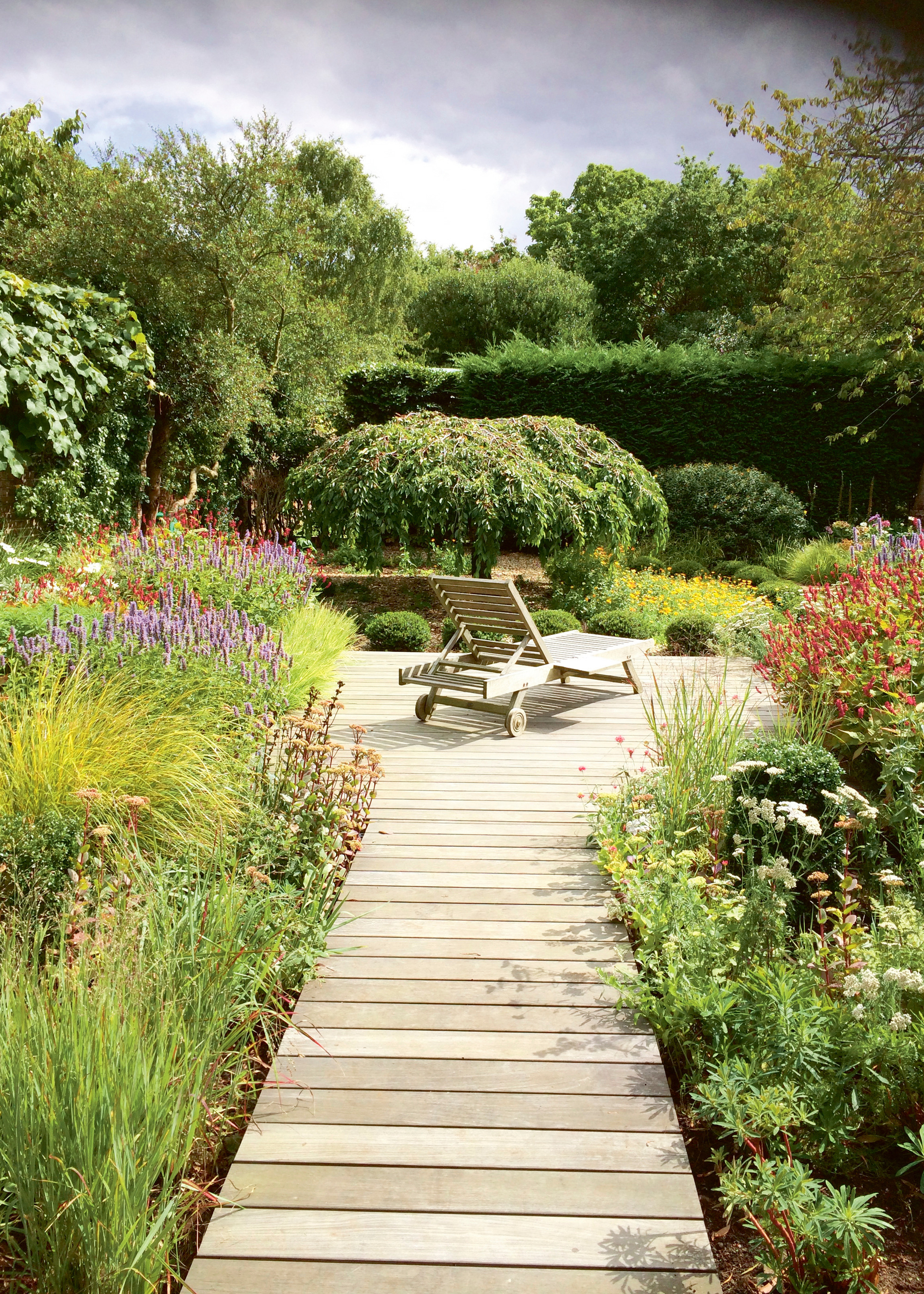
Cut the hedges to the design and style you want.
Hedges are another traditional method of securing boundaries and creating privacy in urban gardens. But don't be put off by this if clipped styles and topiary aren't your bag. Opt for something a little wilder. There are plenty of options for living privacy fences. Rebecca McMackin is a big fan of planting flowering trees and shrubs instead of traditional hedges.
"Many of us reflexively turn to Arborvitae hedges when thinking of privacy," says Rebecca. "And while Arborvitae are lovely, easy, and often a native plant, I think we can do better. Intermixing other sizes, textures, and colors of shrubs and small trees can make a hedge both beautiful and far more ecological.
"Imagine a bird looking for a place to nest. Many birds want a densely branched deciduous shrub or tree. Looser hedges can screen your space while inviting in wildlife. Flowering trees and shrubs can also make the hedge part of the garden, rather than just a backdrop."
Rebecca continues: "Species that work well for a diverse hedge include Rhododendrons, Taxodium ‘Peve Minaret’, Cryptomeria japonica, Viburnum nudum, dentatum, or any Viburnum native to your region, as well as small flowering trees like Cornus florida or Serviceberries.'
"Tall hedges can act as a screen to mask a neighbour's view, but make sure you keep them under control," says Manoj. "You must not block out light from your neighbour's internal rooms, or you may end up with a dispute on your hands."
FAQs
Do I Have a Right to Privacy in My Own Garden?
This is an increasingly tricky topic, particularly with the advent of surveillance cameras and home security systems everywhere–and laws may vary across states and in different countries. Being overlooked is something that often cannot be helped in urban areas, however, being watched or filmed is a different story and there are generally voyeurism laws in place that address this.
Thankfully, situations which require legal intervention are rare, and the desire for privacy in our backyards is usually more about creating a space where we can relax and be undisturbed by outside intrusions. As you can see, there are many ways to achieve this, whatever the size or style of your own urban garden.
Be The First To Know
The Livingetc newsletters are your inside source for what’s shaping interiors now - and what’s next. Discover trend forecasts, smart style ideas, and curated shopping inspiration that brings design to life. Subscribe today and stay ahead of the curve.
Jacky Parker is a London-based freelance journalist and content creator, specialising in interiors, travel and food. From buying guides and real home case studies to shopping and news pages, she produces a wide range of features for national magazines and SEO content for websites
A long-time contributor to Livingetc, as a member of the team, she regularly reports on the latest trends, speaking to experts and discovering the latest tips. Jacky has also written for other publications such as Homes and Gardens, Ideal Home, Red, Grand Designs, Sunday Times Style and AD, Country Homes and Interiors and ELLE Decoration.
-
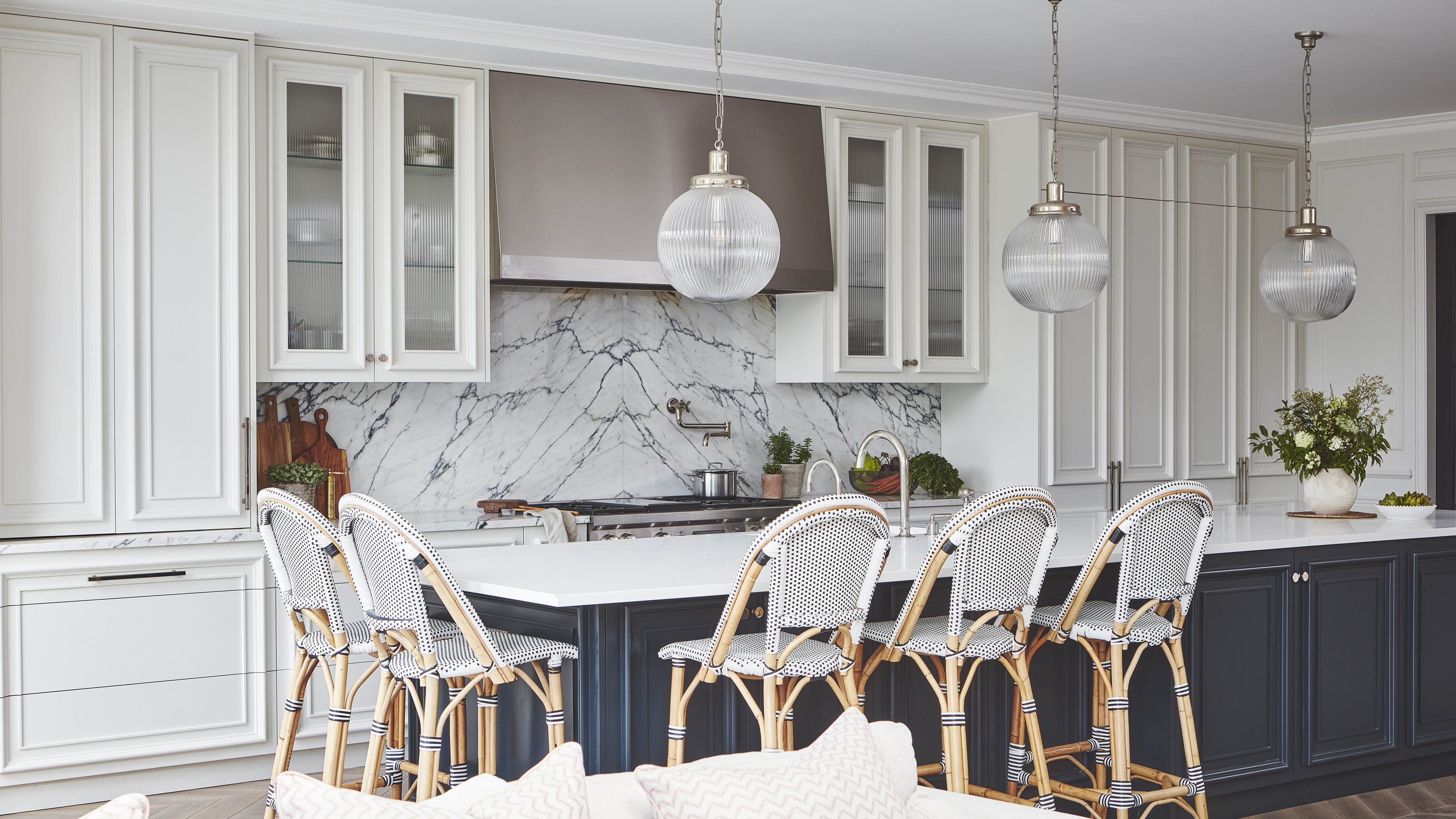 90s Kitchen Trends We're Seeing in 2025 — 5 Retro Features Making Waves in Modern Designs
90s Kitchen Trends We're Seeing in 2025 — 5 Retro Features Making Waves in Modern DesignsA quarter of a century later, 90s-inspired interiors are back, serving kitchen nostalgia with a contemporary twist
By Lilith Hudson
-
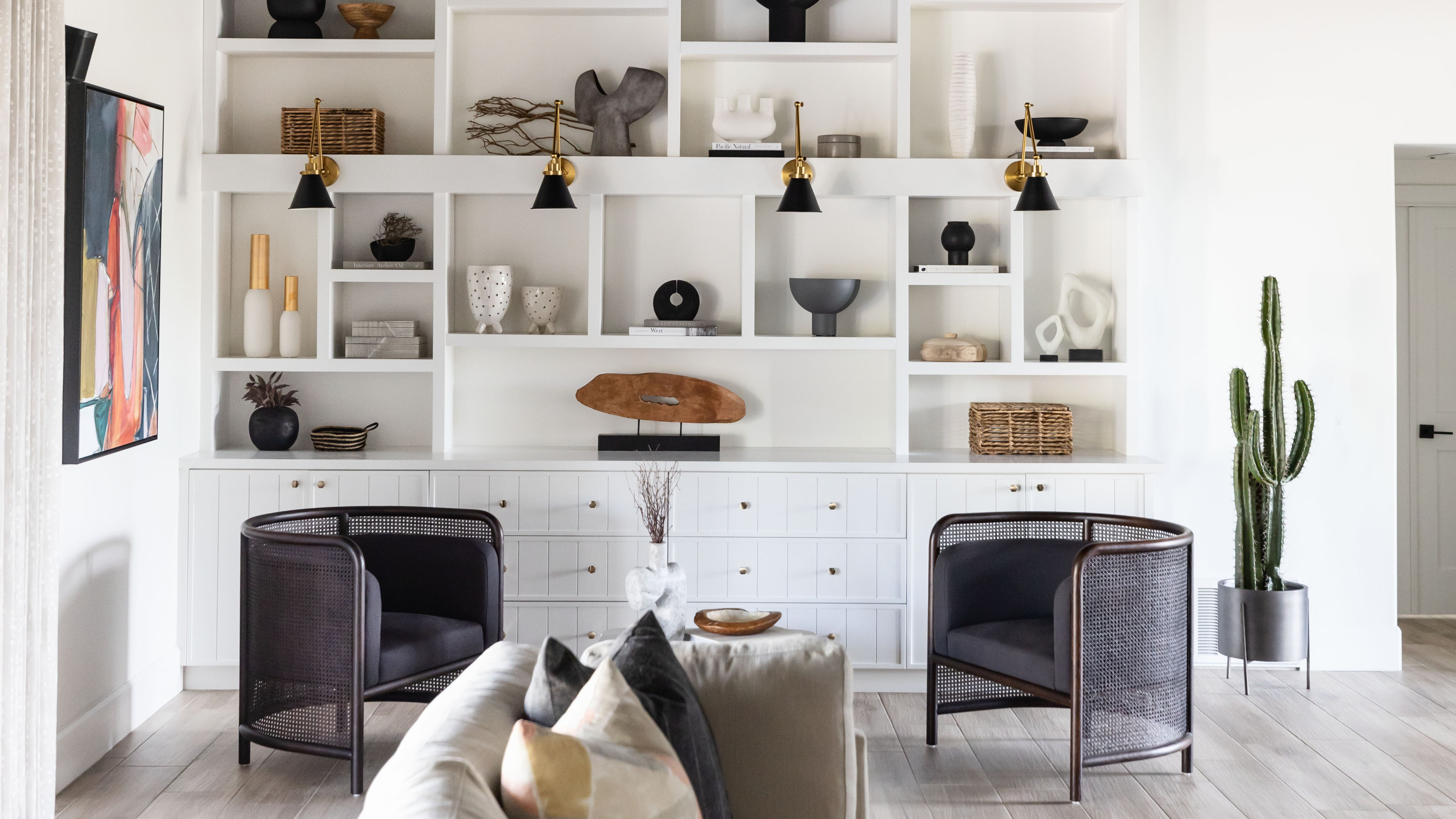 The "Reverse Decluttering" Method Flips Everything You Thought You Knew About Getting Rid of Stuff on Its Head
The "Reverse Decluttering" Method Flips Everything You Thought You Knew About Getting Rid of Stuff on Its HeadThis unconventional technique helps prioritize the items you actually love for a quicker and more effective sort-out, and it's being lauded by experts
By Lilith Hudson
